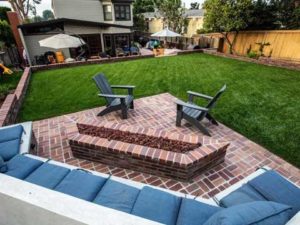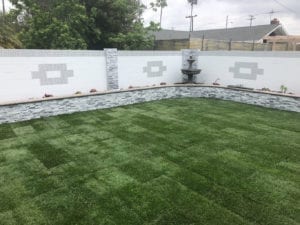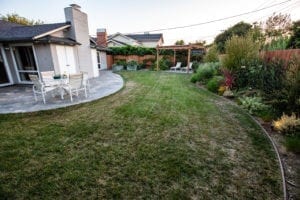In the world of landscaping and sports fields, the debate between turf and grass has been ongoing for years. With each option offering unique benefits and drawbacks, choosing the right type of greenery is crucial for achieving the desired aesthetic appeal, maintenance ease, and functionality.
Here, we delve into the intricacies of both turf and natural grass, examining their advantages and disadvantages to help you make an informed decision for your next landscaping or sports field project.

Pros and Cons of Turf
Pros
Low Maintenance: One of the primary advantages of artificial turf is its low maintenance requirement. Unlike natural grass, which requires regular mowing, watering, and fertilizing, synthetic turf demands minimal upkeep.
Durability: Synthetic turf is known for its durability and ability to withstand heavy foot traffic and harsh weather conditions. It remains resilient and vibrant even in extreme temperatures, making it a reliable choice for high-traffic areas like sports fields and playgrounds.
Water Conservation: As water scarcity becomes an increasingly pressing global concern, the water-saving aspect of artificial turf cannot be overlooked. Unlike natural grass, which necessitates substantial water usage, synthetic turf significantly reduces water consumption, thereby contributing to water conservation efforts.
Cons
Initial Cost: While the long-term savings from reduced maintenance are undeniable, the initial installation cost of artificial turf can be significantly higher than that of natural grass.
Heat Retention: One of the criticisms directed at artificial turf is its tendency to retain heat, especially during scorching summers. This can result in uncomfortably hot surface temperatures, making it less ideal for barefoot activities or for places with high temperatures.
Environmental Impact: Despite its water-saving benefits, the production and disposal of synthetic turf can have environmental implications. Additionally, the manufacturing process might involve the use of chemicals and other non-renewable resources.

Pros and Cons of Grass
Pros
Natural Aesthetic Appeal: The undeniable charm of natural grass lies in its natural beauty and aesthetic appeal. Its lush green color and organic texture lend an unparalleled visual appeal to any landscape, providing a soothing and refreshing ambiance that cannot be replicated by synthetic alternatives.
Environmental Benefits: Natural grass contributes to the environment in various ways, including air purification, temperature regulation, and the prevention of soil erosion. It also acts as a natural habitat for various insects and microorganisms, supporting local ecosystems and biodiversity.
Cooler Surface: Unlike synthetic turf, natural grass tends to stay cooler even during hot summer days, providing a more comfortable surface for outdoor activities. This makes it a preferred choice for parks, recreational areas, and residential landscapes where people spend extended periods outdoors.
Cons
High Maintenance: One of the most significant drawbacks of natural grass is the high maintenance it requires. Regular mowing, watering, fertilizing, and pest control are essential for maintaining the health and appearance of natural grass, demanding a significant investment of time, effort, and resources.
Water Consumption: Natural grass necessitates a substantial amount of water for irrigation, particularly in regions with arid or semi-arid climates. This can pose a significant challenge, especially in areas where water conservation is a priority and water restrictions are in place.
Vulnerability to Weather: Natural grass is susceptible to weather fluctuations, including extreme temperatures, droughts, and heavy rainfall. Adverse weather conditions can result in discoloration, wilting, or even the development of pests and diseases, requiring additional care and intervention to ensure the grass’s health and longevity.

Choosing between turf and grass ultimately depends on various factors, including budget, location, intended use, and personal preferences. While synthetic turf offers low maintenance and durability, it comes with a higher initial cost and potential environmental concerns. On the other hand, natural grass boasts aesthetic appeal and environmental benefits but demands significant maintenance and water consumption. Understanding the distinct advantages and disadvantages of both options is essential for making an informed decision that aligns with your specific requirements and priorities. Whether you opt for the low-maintenance convenience of artificial turf or the natural allure of lush green grass, the key is to select the option that best suits your needs while also considering the long-term implications for your home environment and sustainability.
To explore more ideas, you can visit How to Design a Low-Maintenance Garden.


